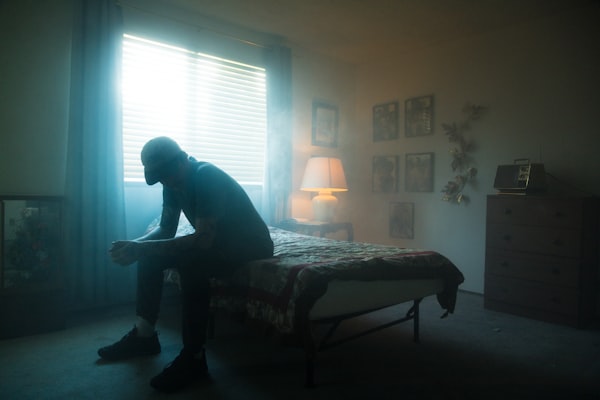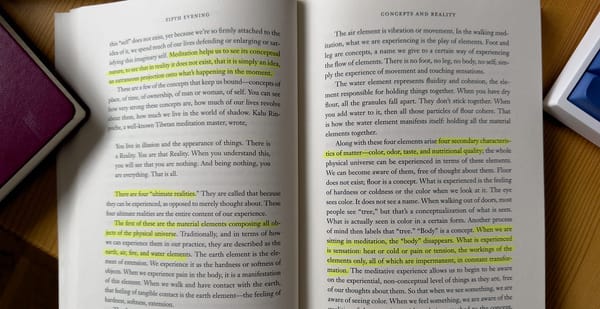Not Entirely Boring Newsletter Issue 6

Greetings! 👋 And this week, I am writing from Vancouver in Canada! 🇨🇦
I can’t believe how much I have fallen in love with the city! The multiculturalism is amazing, with food and people from all walks of life. It’s easily the most LGBTQ friendly city I have ever been too! The people are so welcoming and friendly. It makes me smile that a place like this still exists in the world. I am also staying at one of the best hotels I have ever stayed in, it’s simply breathtaking. I can’t wait to show everyone the video review later this year. However, keep an eye out for the written review sooner. Though my trip is nearing it’s end, it has been the break that my mental health has been desperate for and I have recharged all my batteries ready for my return to the UK in a few days time.
But with all this Canadian goodness, I have also been taking time to read and watch some fascinating stuff online. But before I get into that, remember that all long form blogs (not including the newsletter) are available on the Not Entirely Boring website and also on Medium. If you are a Medium user, you can follow me here.
☎️ the rise of the dumbphone
Here’s a unexpected one. This article caught my eye this week. Apparently there has been this rise in GenZers buying dumbphones or as they used to be called, ‘phones’. No touchscreen or smart features, no apps and limited capabilities. Now, let me just preface this by stating that the smartphone market is under no threat whatsoever, as these phones - which are super cheap - are normally purchased as a second device that GenZers will use when they are out with friends as they don’t want to be distracted. I actually think this is fantastic! I am terrible for having my iPhone in my hand, almost as if it’s a security blanket. I would also say I have a love/hate relationship with my iPhone, and I think there is some argument for having a dumber backup. Interestingly, with tens of thousands of these old-school flip phones being sold each month, the manufacturers have included some modern technical bits such as 4G and a slightly better camera than the old bricks used to come with. You can check out the article from the Wall Street Journal here.
🌍 the wallace line
Have you ever heard of the Wallace Line? No? The Wallace Line is actually a fascinating geographical feature that has puzzled scientists for centuries. This is geography, but don’t worry, it’s not entirely boring 😊

Named after the British naturalist Alfred Russel Wallace, who first discovered it in 1859, the Wallace Line is an imaginary line that separates the animals of Asia and Australia. To put it simply, to the west of the line, the animals are more closely related to those found in Asia, and to the east, they're more similar to those found in Australia.
But why is this such a big deal? Well, it's because the line runs right through the middle of Indonesia, which is one of the most biodiverse regions on the planet. On the western side, you'll find tigers, elephants, and monkeys, while on the eastern side, you'll find kangaroos, wallabies, and marsupials, and in some areas this is separate by only a few miles of water.
Scientists have long debated why this is the case. Some believe that it's because of the way the continents shifted and separated millions of years ago, while others think that it's because of environmental factors, such as climate and vegetation. Regardless of the cause, the Wallace Line is a perfect example of how geography can shape the evolution of life.
But don't worry if all this talk of geography and evolution is making your head spin. The Wallace Line is also home to some pretty cool animals, like the Komodo dragon, the world's largest lizard, and the tarsier, a tiny primate with enormous eyes. And let's not forget about the incredible coral reefs and turquoise waters that make up the Indonesian archipelago.
Check out this awesome video from PBS all about this fascinating imaginary but also real piece of geography!
🥲 saving the archive
Sometimes it’s hard to stomach the idea that we may lose the Internet Archive. It’s become the perfect online museum, preserving both our cultural, physical and digital histories. Unfortunately for some publishers, the archive also acts as a library of ebooks, I wrote an essay for LGBT History month (you can read it here) and I used the Internet Archive to borrow an ebook for research. I borrowed the book for 2 days and using the DRM attached it disappeared from my library when my time was expired. Just like a normal library - but publishers are not too fond of this idea and have been taking the internet archive to court over the issue. In March this year, a judge ruled in favour of the publishers. You can read more about the case here. Though this is an apolitical newsletter, I believe that knowledge and education can make each of us superheroes, If you wish to donate to the internet archive to support them, you can also do that here.
Over the last 40 years I’ve bear witness to the decimation of libraries in the UK. I remember being a kid and my town having mobile libraries - which were essentially huge busses filled with books that were available to borrow, it would stop at the end of my street every Thursday. My love to books started then, and never went away. Book shops are still my happy place. And for publishers to go after a digital library makes me feel very uneasy. Because the internet archive isn’t just a digital lending library, it’s also have a huge array of artwork that would otherwise be forgotten.
😎 this is cool

Speaking of artwork that would other be forgotten, the Pandora’s box, that is the Internet archive, recently put up a digitised array of artwork from magazine advertising as seen in the 1920s. From cigarettes to coca-cola (when it has the good stuff in it) - though I had to admit some of my favourite artwork comes from old advertising for make up. Advertising and marketing, by definition is designed to appeal to the maximum number of people, and therefore if you think about it, advertising is like looking into the culture and society of the past. It’s fascinating. You can check out the archive here
🤖bicentennial people
Stories and studies in AI is really the gift that keeps on giving! Since I wrote a, let’s call it, somewhat skeptical piece on ChatGPT, coming from the perspective of someone who believes that AI will foster a generation on ‘lazy’ thinkers, I didn’t want to (a) put myself into an echo chamber and (b) think it’s important that we challenge our own beliefs. And for those who have been reading these newsletters, you’ll see how my understanding and appreciation of the capabilities of ChatGPT and AI have been evolving. You can always check out my archive of previous newsletters here.
Researchers used OpenAI's GPT-3.5 language model to train 25 different AI bots to act like humans in a virtual town. The bots were programmed to do activities such as cooking, going to work, and practicing professions like painting or writing. The results of this study have yet to be peer-reviewed. But according to the article, “The researchers found that their agents could "produce believable individual and emergent social behaviours." For instance, one agent attempted to throw a Valentine's Day party by sending out invites and setting a time and place for the party.”
Here’s the abstract from the original study: (this link opens the PDF original)
Believable proxies of human behaviour can empower interactive applications ranging from immersive environments to rehearsal spaces for interpersonal communication to prototyping tools. In this paper, we introduce generative agents—computational software agents that simulate believable human behaviour. Generative agents wake up, cook breakfast, and head to work; artists paint, while authors write; they form opinions, notice each other, and initiate conversations; they remember and reflect on days past as they plan the next day. To enable generative agents, we describe an architecture that extends a large language model to store a complete record of the agent’s experiences using natural language, synthesise those memories over time into higher-level reflections, and retrieve them dynamically to plan behaviour. We instantiate generative agents to populate an interactive sandbox environment inspired by The Sims, where end users can interact with a small town of twenty five agents using natural language. In an evaluation, these generative agents produce believable individual and emergent social behaviours: for example, starting with only a single user-specified notion that one agent wants to throw a Valentine’s Day party, the agents autonomously spread invitations to the party over the next two days, make new acquaintances, ask each other out on dates to the party, and coordinate to show up for the party together at the right time. We demonstrate through ablation that the components of our agent architecture—observation, planning, and reflection—each contribute critically to the believability of agent behaviour. By fusing large language models with computational, interactive agents, this work introduces architectural and interaction patterns for enabling believable simulations of human behaviour.
📺 somewhat interesting tv
As I’ve been travelling I haven’t had chance to keep up with some of my regular TV shows, but I did start watching two recently which I would recommend:
Cunk On Earth is on BBC and Netflix and is a mockumentary that charts evolution. Created by Charlie (Black Mirror) Brooker and presented by Diane Morgan, the show it’s absolutely hysterical and having found it completely by accident I had no expectations and so wasn’t hard to exceed them. Check out the trailer

Love and Death (HBO / Sky Atlantic) is a show I have started and only seen the first episode so far, though I have saved them for the flight home. Where do I begin? The TV drama is very impressive with a stellar cast including Elizabeth Olsen, who shines. From TV producer David E Kelley who I will forever be indebted to for bringing Ally McBeal into my world, Love and Death begins with a horrific murder and then we go back a few months and from what I’ve seen it looks like the series will lead up to this point. Very much a “listening” tv show (you will need to put your phone down) it’s very promising so far, I will be binging the next set of episodes on the flight home this week. Check out the trailer here:

🗣️ quote of the week
“Over time, memories accumulate like evidence—of who we’re becoming, and eventually, of who we believe we are.”
Chris Bailey - How To Calm Your Mind
✍️ words
This week has been a good week for writing and learning. Having so much time to be able to learn and create has been such a blessing. In the final days of this trip I am now scratching my brain to try and work out how I can keep this up. My goal, is to have 2 - 3 long form blogs written every single week on subjects such as…, anything fascinating 😎. I am currently writing a piece on how social media couple cripple the sushi industry. It’s a stretch, but quite fascinating. You’ll be able to read that next week on the NEB website and also on Medium.
This week I dove into my zettelkasten, and found some notes that I wrote a while ago on the links between food, brain function and career success and decided to write and piece connecting these ideas - Eat Your Way to Career Success you can read here (and here on Medium).
Also, Tana is proving to be one of the most impressive new pieces of software that I’ve come across in recent years and feels like I’ve started building a very effective and very simple system. You can read the first two blogs in a series that I am writing about what I’m learning with Tana and how I am applying it to my daily workflow.
https://www.notentirelyboring.com/my-first-week-with-tana/
https://www.notentirelyboring.com/tana-basics-a-scratchpad-the-organises-itself/
📺 youtube updates
Since mid-April, we’ve been to Las Vegas, Hawaii and cruised to Vancouver. Glen and I got married and we’ve managed to make 16 videos for YouTube reviewing the hotels, and vlogging parts of our trip and it’s all in the can and the next big job is editing. New videos will be released every 2 weeks on YouTube, starting with our review of Circa, the newest hotel on Fremont Street. I mention this in every newsletter, but you can subscribe to our channel here and support our ventures!
☕️ you can now buy me a coffee
Speaking of supporting Not Entirely Boring, if you have been enjoying these newsletters and have been reading my work on the website, or Medium you can always buy me a coffee - thank you for your kindness.
—
Thank you so much for reading to the end and subscribing to Not Entirely Boring. If you think that someone will find this interesting, please forward it to them and I’ll be back next week!
—
Did a friend forward this email to you? Subscribe now at www.notentirelyboring.com to get this newsletter each week for free!
Ant x





